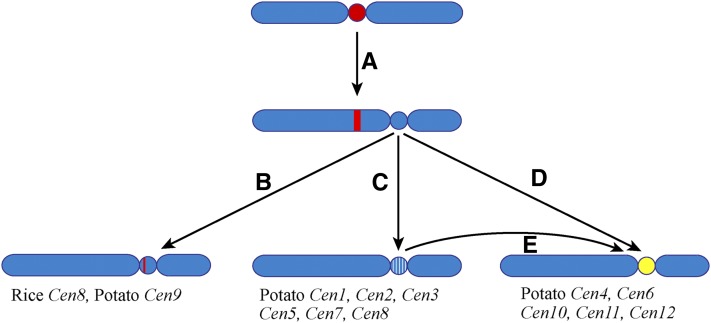Figure 10.
A Model of Centromere Evolution.
(A) A neocentromere activation event may result in the repositioning of the centromere.
(B) The evolutionarily new centromere acquired a satellite repeat array during evolution. The satellite repeat may be derived from other centromeres, such as rice Cen8, or a new repeat, such as potato Cen9. The satellite repeat array in the evolutionarily new centromere may expand and eventually occupy the entire centromere.
(C) The evolutionarily new centromere may survive for several million years without satellite repeat invasion. Such evolutionarily new centromeres will slowly evolve by accumulating DNA mutations and transposable elements (white lines).
(D) and (E) A de novo DNA amplification of a satellite repeat, possibly based on an eccDNA-mediated mechanism, and insertion of the repeat (yellow) in the CENH3 domain can turn an evolutionarily new centromere into a repeat-based centromere.

